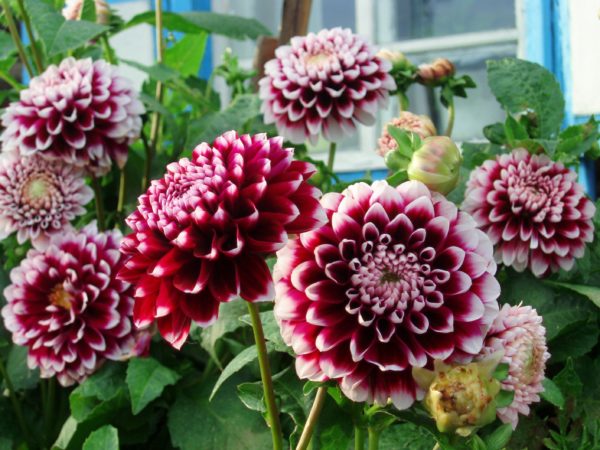
Dahlias are heat-loving flowers, their tubers are afraid of frost and cold soil, so they are planted at a time when the ground is already well warmed up. Usually this time comes at the end of May or even at the beginning of June. In the southern regions, a suitable period is about a month earlier. In any case, dahlias are planted only in the spring. In the fall, during the winter, tubers are not left in the ground or planted. Flowering occurs after about 60 days. It pleases the plant with its variegated buds to the very frosts.
Content
Site selection and soil preparation
Do you want dahlias to please the eye with bright colors for a long time? Pay attention to the choice of landing site. The penumbra is best suited for the plant, that is, half the day the sun should well illuminate the flower bed, it is good to spend the afternoon in the shade. This arrangement does not prevent full disclosure, but the duration of flowering will increase. Another condition is wind protection. Draft our pet does not tolerate.
Soil preparation for future planting dahlias should begin in the fall: dig, fertilize with humus. In the spring add fertilizer, wood ash. As for the composition of the soil, the flower can be called unpretentious, but nevertheless fertile soils of a neutral or slightly acidic composition are recognized as the best for dahlias. It will turn out to acidify the soil if you add peat to it, an admixture of slaked lime will have the opposite effect - it will extinguish too high a level of acidity. Dahlia tubers do not tolerate moisture retention soils.
One should also take into account such a moment as intolerance of dahlias to neighbors. The advantage of this quality is that there are usually few weeds on a bed with royal flowers. Minus - selective selection of garden plants for the neighborhood. Marigold, gladiolus, sage, cosmea, cleome, rudbeckia cohabit successfully with the kings of the flowerbed. Dahlias of different varieties get along well with each other.
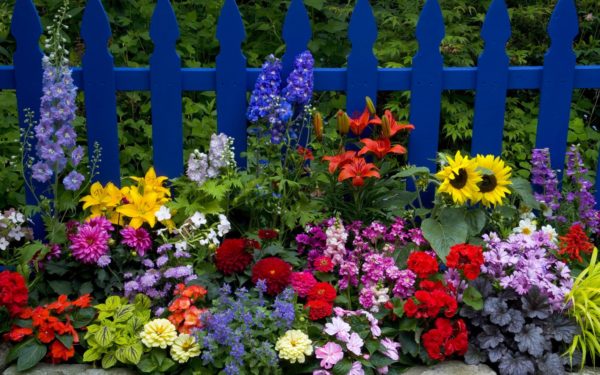
Preparing Dahlia tubers for planting
Already in April, dahlia tubers need to be inspected and prepared for planting. Preparation consists in cleaning from the earth, sand and sawdust. Dry parts of stems, dried and decayed roots are removed. Damaged places on tubers can be greased with brilliant green. To accelerate the flowering of tubers dahlia before planting, it is advisable to germinate. To do this, they are transferred to a warm place, placed in boxes with earth, peat or ordinary sawdust and slightly moistened.
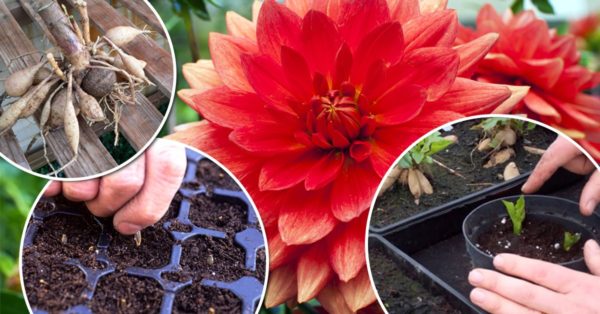
Planting Dahlias in the open ground
To plant dahlias in the selected place make holes. The distance between them depends on the variety. For dwarf and low-growing varieties, 50 cm between the bushes is enough, for medium and high ones - at least 75 cm.A hole for planting a tuber needs to be made about three times the root. Compost should fit in the recess, lie on the tubers freely and still have some free space for dusting with earth. Sprinkle the roots so that the root neck rises a couple of centimeters on the surface.
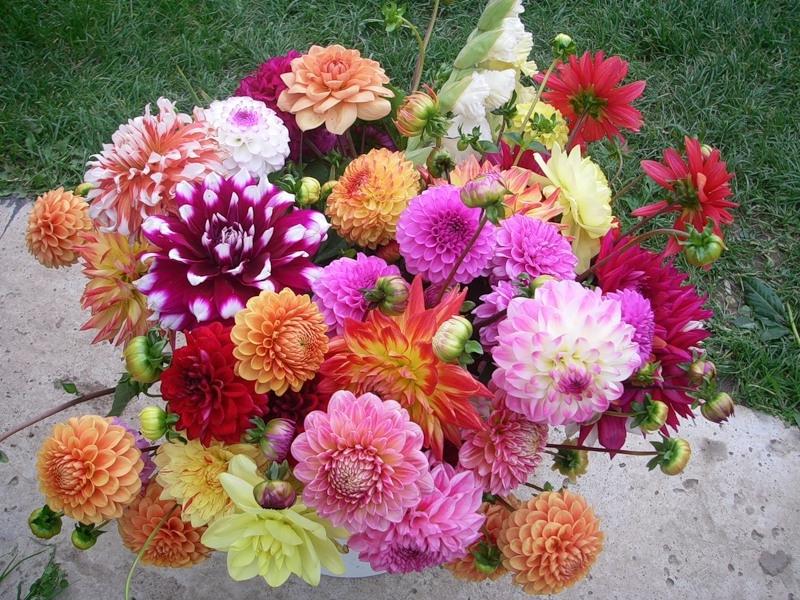
Dahlias - Care
Features of watering
Kings of the autumn garden can not stand both severe drought and excessive moisture. Watering should be constant, but moderate. In the absence of natural precipitation, they are watered twice a week, with such an amount of water that will wet the soil by 30 centimeters. When mulching, watering is carried out as the soil dries completely.
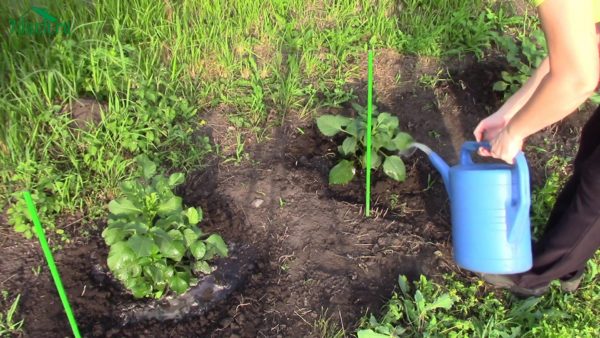
Feeding rules
If, when planting, enough fertilizer was put in the hole, then the first feeding should be postponed until a lush green bush appears. Otherwise, planting should be fed in the first week after planting. It is not difficult to do this - after watering and loosening around the bush around the perimeter, make small indentations in which fertilizers are laid, or watered with liquid. Further feeding is carried out every two weeks. If dahlias grow on fertile soil, you can fertilize them less - during the appearance of the first buds, and then in the flowering process will be enough. As fertilizers for dahlias, organics, superphosphate, wood ash are used.
Dahlia Support
High grades of dahlias require support and garter. Even thick and seemingly strong stems are actually very fragile and break from the wind or simply under the weight of the flowers. The support should be strong, the height of the peg depends on the variety and the height of the bush. Ideally, the peg for supporting the dahlia should be dug with the tuber during planting - this will guarantee that the root will not be damaged when the stakes are installed.
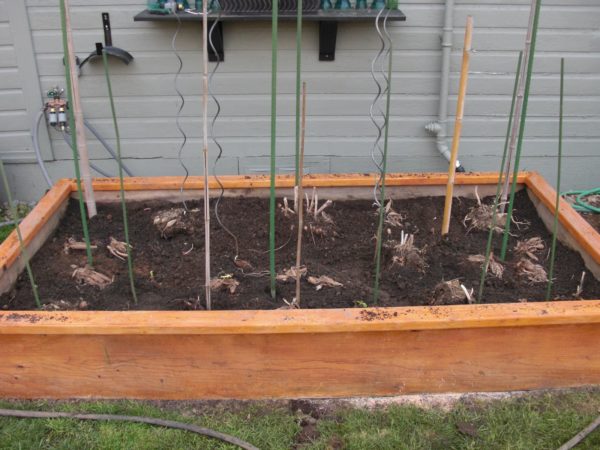
Breeding
Propagation of dahlias, possibly by seed, division and cuttings. Annual seeds of dahlias are grown from seeds, sowing directly in the garden, or growing seedlings. Perennials - dahlias are divided or cut in the spring, before planting.
Tuber division
During germination, buds appear on dahlia tubers. The root is divided into parts so that each individual tuber has a kidney. Sometimes there can be several such shoots, then the tuber can be divided into several parts. Each part with a kidney is a separate sprout for a new bush.
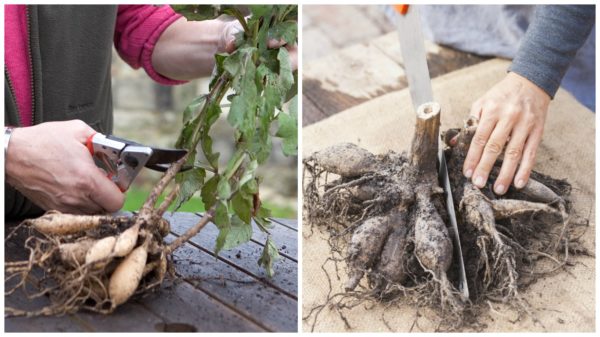
Cuttings
During germination, before landing in the soil from the bud, an shoot up to 10 cm in height may develop. Such shoots are removed before planting and used for further propagation. To do this, the sprout is instilled into a separate container, put in an unlit place, watered. After rooting the cuttings, they plant it in open ground and take care of it according to the usual rules for the care of dahlias.
Possible diseases and pests, methods of control and them
Dahlias are fairly resistant plants to all kinds of viral diseases. Through contaminated soil, they can become infected with spotted or mosaic wilt viruses. Unfortunately, in this case, it is not possible to save the plant. The affected bush should be removed and destroyed as quickly as possible so that the virus is not transmitted to neighboring plants.
The main pests of dahlias are slugs, aphids, spider mites, earwigs, blind bugs. The fight against them is treated with soapy water or decoctions of wormwood and celandine. Decoctions can be combined with a soapy solution.In severe cases, spray with specialized chemicals, according to the instructions.
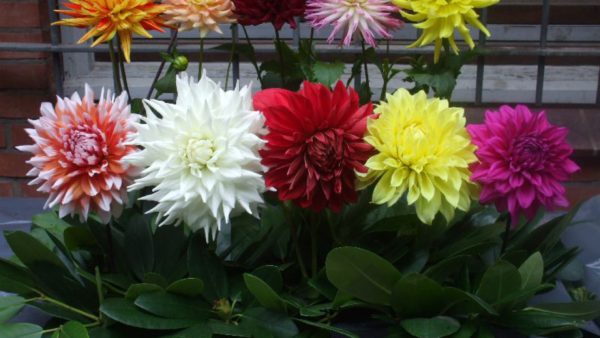
Reviews
Grace, many forms, varieties, varieties have made dahlias the favorites of gardeners - flower growers for many centuries. In their reviews, they share both enthusiastic applause to the Mexican native, and complaints about the chores associated with the cultivation. Undoubted advantages in growing dahlias:
- low soil
- simple agricultural procedures,
- the opportunity to enjoy flowers to the very frosts,
- a diverse palette of shades, shapes and varieties.
However, many do not dare to plant these flowers in the areas due to the numerous concerns associated with wintering and storage. Mandatory digging and spring planting take time, and storage takes a suitable room.

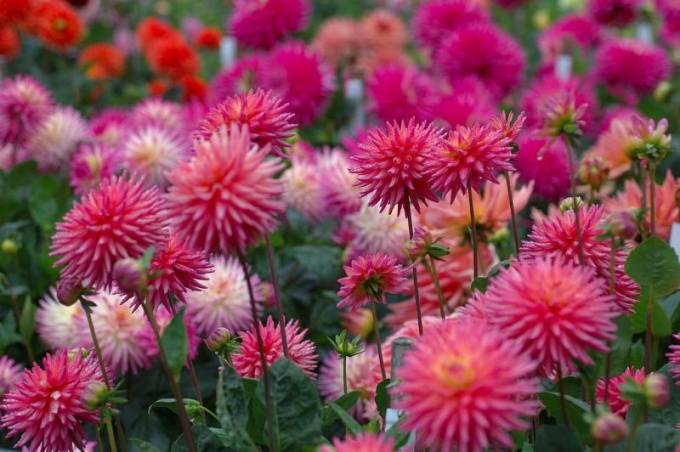

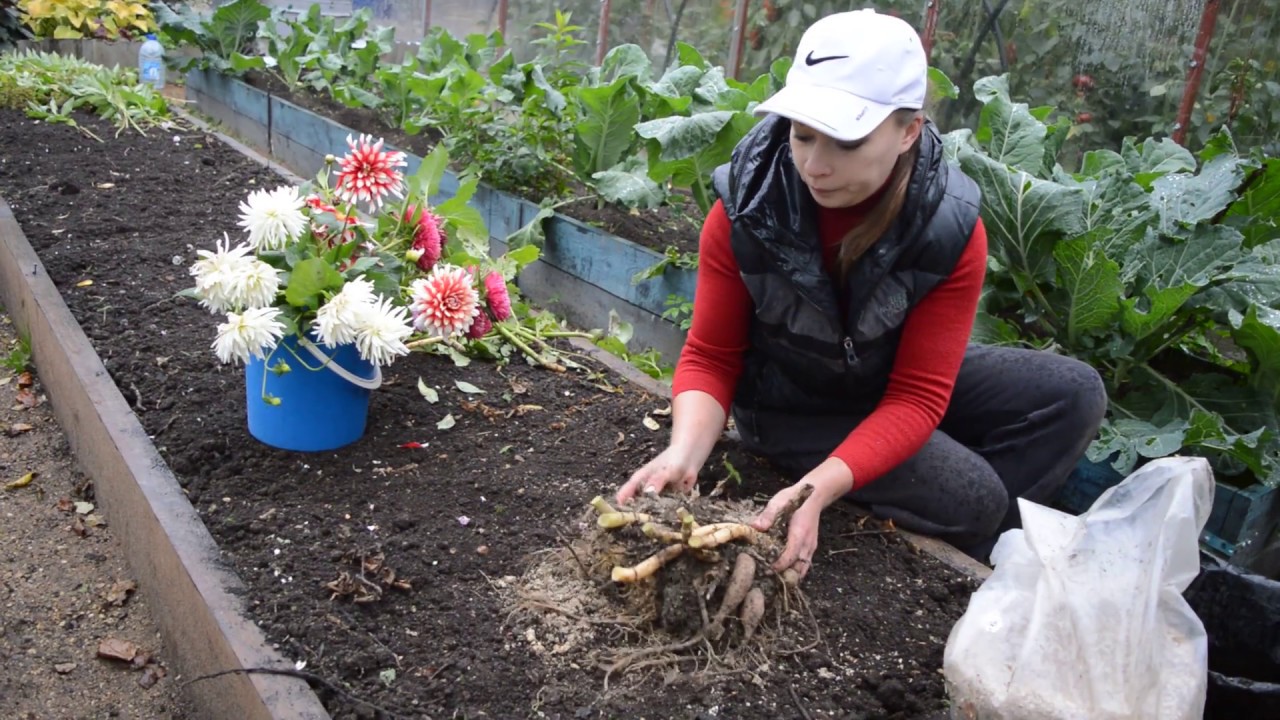
 When to plant annual dahlias for seedlings according to the lunar calendar in 2018
When to plant annual dahlias for seedlings according to the lunar calendar in 2018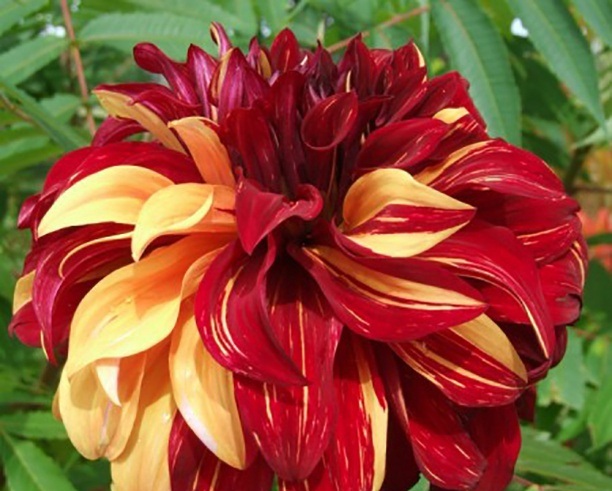 Description of the decorative dahlia "Bohemian Spartacus"
Description of the decorative dahlia "Bohemian Spartacus"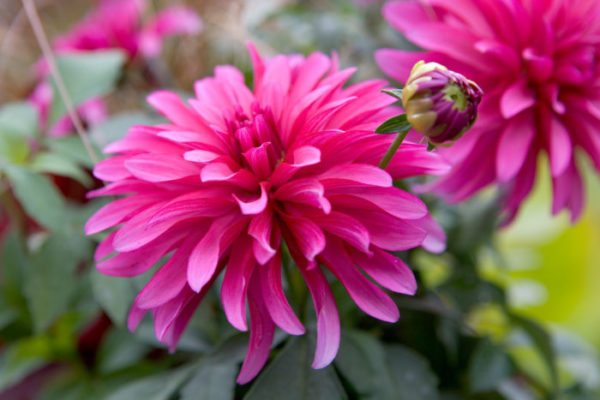 Dahlia Gallery: description of varieties, photo
Dahlia Gallery: description of varieties, photo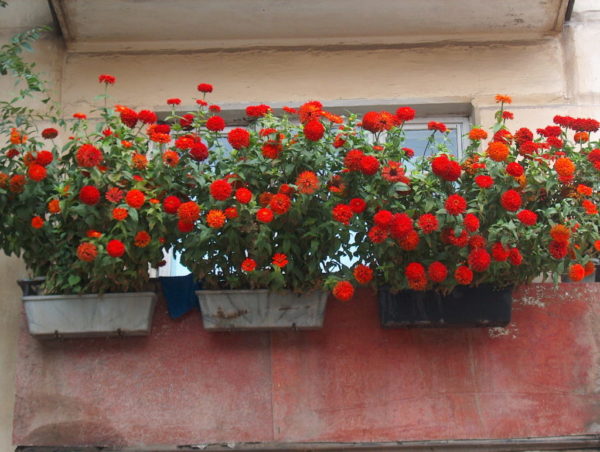 Planting and care of dahlias in pots and on the balcony (photo)
Planting and care of dahlias in pots and on the balcony (photo)